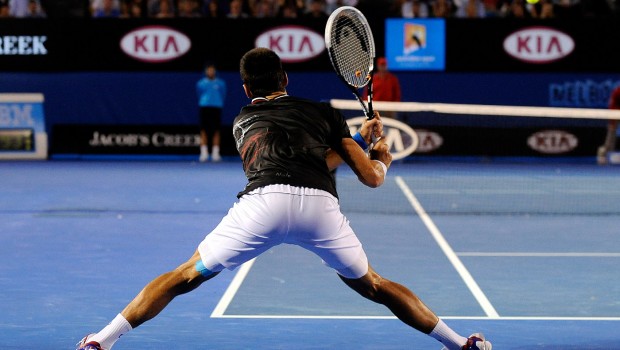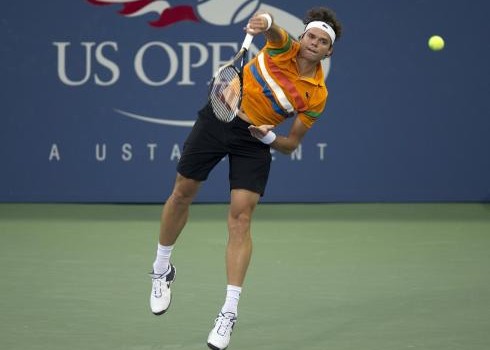Rafael Nadal just finished a masterpiece of a final capturing his 13th Grand Slam title at the 2013 US Open. After beating number 1 ranked Novak Djokovic in 4 sets, he sets his sights on besting Roger Federer for the most career major titles. Nadal was off for about 7 months from 2012 until 2013 after suffering a difficult loss to Lukas Rosol at Wimbledon in 2012. My question becomes, was Nadal actually injured? What is blatantly obvious is that Nadal wasn’t at home resting his battle scarred knees.
Bringing It Back Old School
What changed the most about Nadal, was not well rested knees but something deeper and more important. He completely changed his forehand and backhand technique! We’ll start with the changes on the backhand. As you will see below, Nadal is hitting his backhand with the racket going virtually straight back. For his entire professional career up to the time he took off, he was a player that went up with the racket on the backhand side.
At an unbelievably critical time in his career, Nadal and his Uncle Toni decided to alter two of his most widely used strokes. Why? Novak Djokovic upped his level of tennis and had beaten Nadal at one point 7 times in a row from 2011-2012. Especially on non clay surfaces, Djokovic was clearly getting the best of Nadal.
As we see in the image above, Nadal has changed his backhand to a straight backswing. For his entire career it looked much more like the backswing you see Djokovic and most of the other top players using. Why the change? As discussed in our Twisters versus Sliders lesson video, the slider style favors the forehand but takes more time to execute for the backhand groundstroke. Look closely at the picture below at Nadal in his starting position. You’ll notice he starts with the non-dominant hand on the throat of the racket in the picture on the left. You’ll see in the picture on the right he’s making the grip shift and sliding his right hand down on the handle.
The reason that going to a shorter backswing helps Nadal on faster surfaces is it takes less time to perform the swing. He already has to worry about sliding his hand down for each backhand he hits. He has a fairly extreme forehand grip which takes time to change for the stroke. By changing to a straight takeback on the backhand, he allows himself to get the swing off quicker which seems to be helping him on hardcourts.
What you can learn from the 13 time Grandslam Champion
What Nadal really shows here is the ability to adapt and change his game for improvement. Something so many of us are guilty of not doing! Sometimes simplifying a stroke rather than making it more complex is the foundation for success. There are people that make things happen and people that watch things happen, Nadal definitely makes things happen.






